|
Arctic Silver Ceramique
review by David, 17 August 2003
A Closer Look
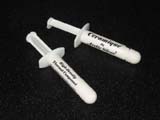 ... ... ... ...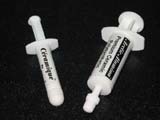
The tubes containing the compound look rather different
compared to the ones Arctic Silver used for AS2, AS3 and AS Alumina.
Don't be fooled by the pictures, they're actually quite small.
Compared to the older thermal compounds offered by Arctic
Silver, Ceramique is much denser. The Alumina thermal compound for
example, came in a much larger sized tube, but with only 1.75g of
thermal compound inside. Ceramique, on the other hand, came in a
much smaller tube, but contained 2.7g per tube.
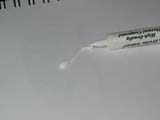
Squeezing the Ceramique out onto some paper, the compound is
much thicker and viscous compared to Alumina, my previous thermal
compound of choice. Ceramique retains the great property of being
very easily removable from CPU cores, much like Alumina. Just a
quick wipe with some tissue paper, and off it goes.
Test System &
Results
We tested on the following system, using Arctic Silver
Alumina as a comparison compound.
- Pentium4 2.4C @ 3GHz (12x250) + stock P4 cooler
- Gigabyte 8PENXP
- Corsair TwinX512-4000
- MSI
Geforce4 Ti4200 128MB
- Lian
Li PC-12
We heated up the CPU using two instances of Folding@Home,
running for an hour straight. Load temperatures were taken after two
hours on load, after which the Folding@Home programs were shut down,
and the CPU allowed to idle for 30 minutes, after which idle
temperatures were recorded. Temperature readings were taken from
MBM5.
Arctic Silver recommends a 'breaking in' period of at least
12 hours for the thermal compound to settle in. As such, I didn't
actually do any testing until after I had the thermal pastes in my
system for two days straight running Folding@Home, just to be on the
safe side.
Results
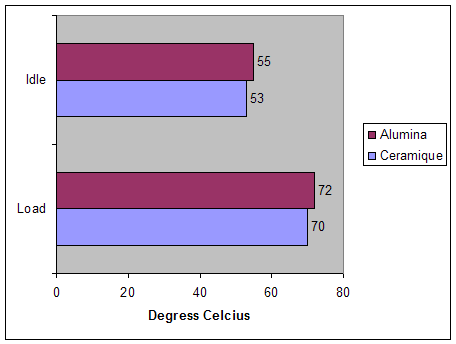
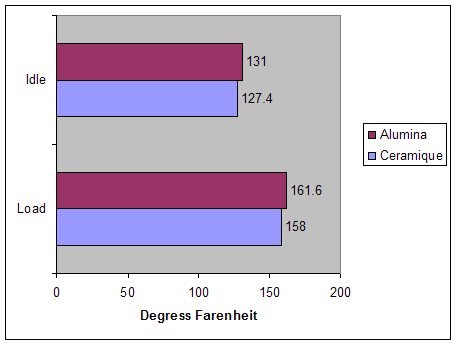
The temperature readings you see above look really high,
though thats mainly due to using the stock P4 cooler. Slap on a
better cooler and temperatures will improve.
Nevertheless, the Ceramique compound consistently outperforms
Alumina by 2C whether on load or idle. Excellent showing by Arctic
Silver's latest product.
Conclusion
>>
|